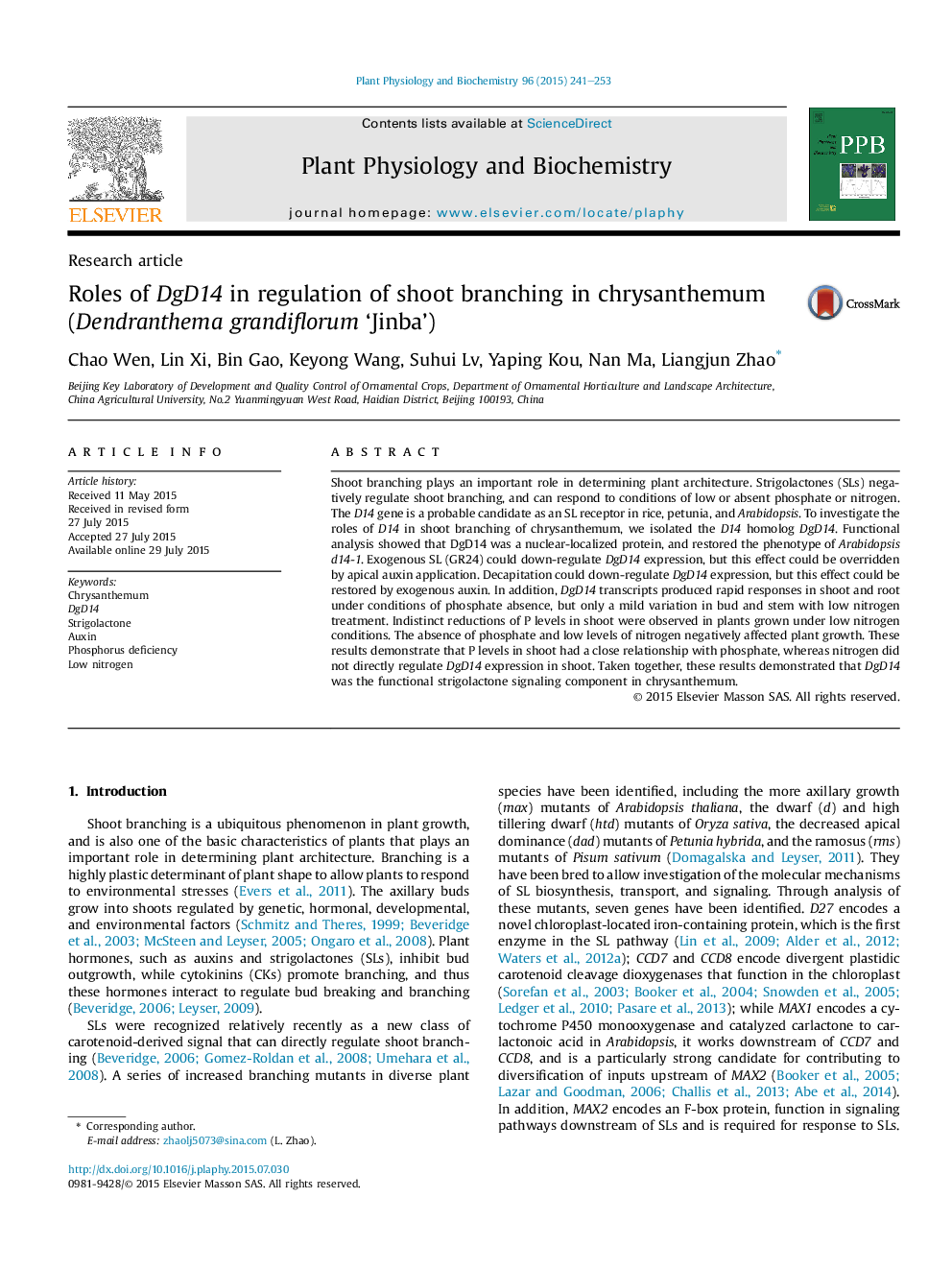| Article ID | Journal | Published Year | Pages | File Type |
|---|---|---|---|---|
| 8354720 | Plant Physiology and Biochemistry | 2015 | 13 Pages |
Abstract
Shoot branching plays an important role in determining plant architecture. Strigolactones (SLs) negatively regulate shoot branching, and can respond to conditions of low or absent phosphate or nitrogen. The D14 gene is a probable candidate as an SL receptor in rice, petunia, and Arabidopsis. To investigate the roles of D14 in shoot branching of chrysanthemum, we isolated the D14 homolog DgD14. Functional analysis showed that DgD14 was a nuclear-localized protein, and restored the phenotype of Arabidopsis d14-1. Exogenous SL (GR24) could down-regulate DgD14 expression, but this effect could be overridden by apical auxin application. Decapitation could down-regulate DgD14 expression, but this effect could be restored by exogenous auxin. In addition, DgD14 transcripts produced rapid responses in shoot and root under conditions of phosphate absence, but only a mild variation in bud and stem with low nitrogen treatment. Indistinct reductions of P levels in shoot were observed in plants grown under low nitrogen conditions. The absence of phosphate and low levels of nitrogen negatively affected plant growth. These results demonstrate that P levels in shoot had a close relationship with phosphate, whereas nitrogen did not directly regulate DgD14 expression in shoot. Taken together, these results demonstrated that DgD14 was the functional strigolactone signaling component in chrysanthemum.
Related Topics
Life Sciences
Agricultural and Biological Sciences
Plant Science
Authors
Chao Wen, Lin Xi, Bin Gao, Keyong Wang, Suhui Lv, Yaping Kou, Nan Ma, Liangjun Zhao,
